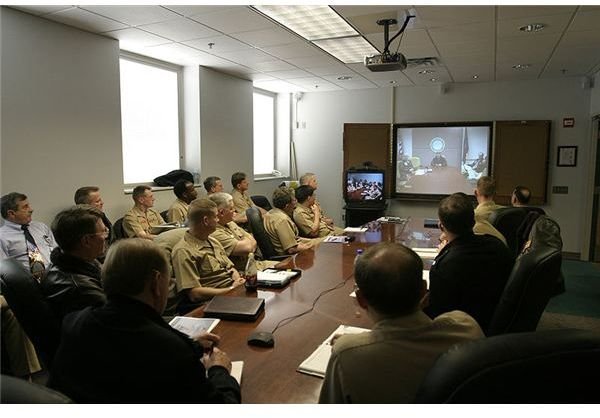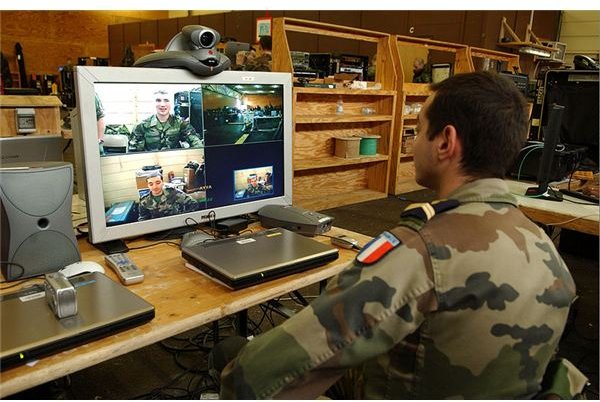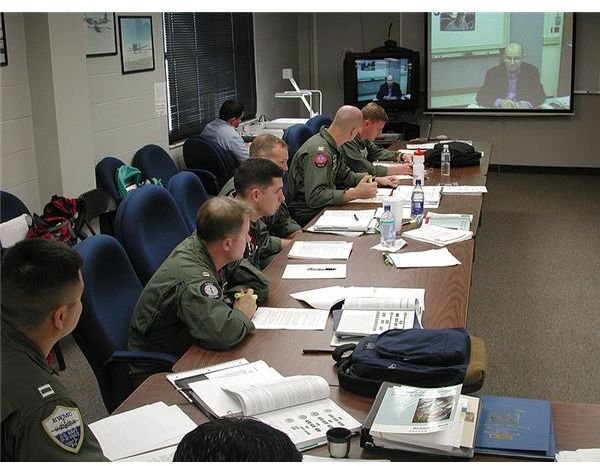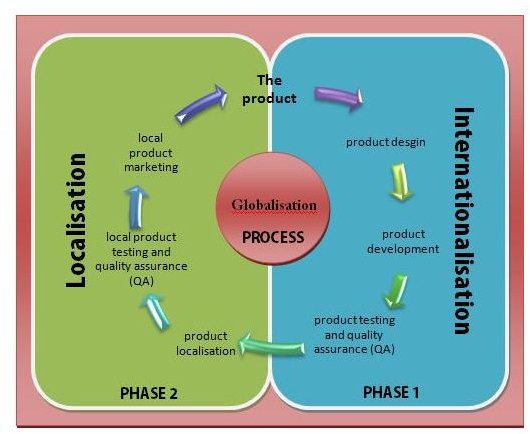Addressing Leadership Problems in a Global Context
The Benefits of Harnessing a Global Team
Initially, countries came to recognize global alliance and interactions as a means for empowerment and for carrying out peacekeeping initiatives, humanitarian missions, socioeconomic activities and foreign trade on a macro-scale. Eventually, advances in communication technologies and accessibility to a wide range of information have presented greater potentials for small businesses to build customer relations in international markets.
Rather than be burdened by the increasing costs of providing travelling and relocation expenses to home-based representatives, the development and creation of global virtual teams present more practical values. Moreover, the work group can be provided with in-depth insights on human responses and behaviors in a market that is entrenched in a different set of traditional and cultural perspectives.
Working under another nation’s laws and regulations becomes easier, since clear and concise interpretations allow for a better understanding of their rationality and significance. These are aspects that a global team has to work on in order to come up with straightforward workable business solutions aligned with the vendor-client’s core values and missions.
However, these benefits are not without drawbacks, which a project leader is compelled to address with utmost competency as a universal navigator. Leadership problems in a global context call for competencies that go beyond the border of routine creative thinking, for collaboration among team members who talk the same language and walk the same path.
The Drawbacks of a Cross-Cultural Virtual Team

Decisive issues need to be addressed in order to draw together diverse individual competencies into a unified set of knowledge and skills, all working for the attainment of a common goal. Hence knowing the most common and critical challenges that confront the global team leader is of great relevance in today’s project management trends. These are:
- Cultural differences
- Communication Gaps
- Absence of a Unified Goal
- Un-nurtured Trust
- Lack of Training Disciplines to Work as a Team
1. Cultural Differences

Cultural competency is not only a matter of knowing the influences of traditions and racial heritage. It is also about the ability to distinguish individual differences acquired as personality traits from those that were borne from a collective set of cultural experiences and upbringing. It’s important to understand that culture is basically the development of socialization processes that were embedded in a person’s mind and form part of his thinking and behavior.
Studies made by Evka Razvigorova and Gottfried Wolf-Lauden (“East-West Joint Ventures: The New Business Environment”, 1991 Blackwell Publications) revealed that 70 percent of failed cross-cultural ventures are attributable to the seriousness of cultural differences. Accordingly, seven out of ten failures were attributable to the behavior patterns of the leaders or managers.
Difference in Behavior Patterns:
There are two dimensions by which cultural competency should come to terms: extroversion and introversion.
Extroversion - That which delves into the study of people and their important events as the factors that influence their tendencies to act first and reflect later. Individuals with extroverted characteristics are likely to have an air of open-mindedness to explore the outside world and the variations in people relationships.
Introversion – That which probes individual inclinations to think first and reflect on the consequences before reacting or responding. As such, a person’s motivation comes from within but is not always influenced by the outside world. Here, the mind demands an assimilation of external persuasions and experiences and how they can fit into the individual’s pre-existing beliefs. Typically, these persons prefer one-on-one communications in forging relationships.
One of the challenges that a global leader faces is the ability by which he can best use his training and the technological tools at hand in navigating a global virtual team in real-world operations. Some examples of cultural difference include but are not limited to:
-
Giving weight to family values as a metric for gauging the level of trust that is given to a relationship.
-
Body language to show respect or disrespect in addressing or communicating with others. Where bowing and avoiding eye contact is a show of respect, it can be misconstrued by most westerners as a sign of insincerity in a culture of “looking into one’s eyes” as a manifestation of openness or honesty.
-
Sensitivity to time and tolerance to time pressure, in which the person at work is likely to multi-task or a have a tendency to mix work with pleasure, often with a mindset that his skills are enhanced by the adrenaline rush experienced when there is little time left. This, however, may not always be an individual trait but borne from a collective cultural habit of being late at meeting appointments or deadlines.
-
Nonetheless, these are typically the persons who avoid making commitments, who stand opposed to those who have lower tolerance for time pressure. The typical attitude of the latter group is to complete a task before moving on to another in order to manage target dates and daily routines.
2. Communication Gaps

Leadership competency in communicating with a global team is largely different in a team setting where the members are co-located. Lack of skills for discerning the appropriate communication style and technological tools can break down trust. Trust is an essential component for maintaining productive networking activities and for spawning other development processes.
A global team leader’s skills in communicating include the ability to project a role model who possesses the universally accepted traits of a good leader:
- charismatic or compelling,
- value-based; one who takes into consideration the core values of the organization as part of a culture
- emotionally intelligent, which is described as the ability to overcome the stresses of cross-cultural interactions and recognize the factors to be nurtured for adaptation and growth.
- team-oriented
- humane or caring
- participative in the sense that he or she involves the members in decision-making processes
Instinctively, team members measure the leader’s competency and style against his method and manner of communication. The clarity and timeliness of conveying instructions plus the suitability of medium used in transmitting instructions make up for the limitations of not having non-virtual face-to-face meetings.
Voice intonation and audibility are factors by which virtual team members form a perception of the type of leader. There may be differences by which languages are interpreted, but often the manner in which it is delivered is used to validate the appropriate interpretation.
Silence in response to a query can be interpreted in several ways. It can be taken as a challenge to make one’s own decisions, or simply, a disinterest in whichever way one may choose to interpret the issue. In a more practical sense, silence indicates that the message was not received due to technical problems or that the recipient is not available or is unable to respond.
As a result, conflicts arise from the uneven distribution of information, and may further be interpreted as discrimination. Basically, a project management leader’s problems in a global context are hurdled by one’s ability to communicate effectively and can be assessed by following areas of intercultural sensitivity:
- If the leader experiences positive feelings toward interacting with members coming from different cultures;
- If positive responses or reciprocity of interactions toward the global leader are elicited from people of different cultures;
- If there is successful attainment of a goal and eventually, successful completion of a project;
- If cross-cultural barriers are managed without suffering from culture-contact stress.
Please continue on page 2.
3. Absence of a Unified Goal

Failure to overcome cultural and language barriers contribute largely to the inability of team members to comprehend the exact goal or mission of the global team. This can lead to lack of agreement and cohesion on ideas being explored or being creatively developed. It can likewise result in overlapping of ideas and redundancies.
Lack of unity in achieving a common goal often leads to participations that are based on different perceptions on why the project is being carried out. Others may view a project as a humanitarian mission while another sees it as a political agenda.
Most often, building trust among team members is difficult to achieve since there is an incomplete basis on which to measure the degree of dependence or reliance placed on each other’s integrity and ability.
To be effective, a navigator of a global team project should possess the competency to steer members of diverse backgrounds to work toward a common goal. This can only be done by encouraging everyone to assume a participative stance in order to be aware of the values of different cultural perspectives and approaches.
Each member is given an opportunity to highlight significances or explain the practicality of adopting a particular stance based on the relevance of his or her knowledge, e.g., the local market and its buying public or international laws for standards of safety. The main guideline in coming up with ideas to broach or courses of actions to take is the overall agreement that it is the best set of solutions to adopt for the purpose of achieving a common goal.
4. Unnurtured Trust

Team members may start out as optimistic and all too willing to contribute their best to achieve success. A global leader may be charismatic enough with his communication methods to encourage team participation as well as put values to what is practicable and logical. However, the leader’s inability to show genuine concern is tantamount to insincerity or lack of integrity. Often, the indicators surface once the pressures of culture-contact set in.
Efforts at project monitoring might be misconstrued as keeping a tight rein and can be taken against the grain of traditional training. One example cited by academicians is the German culture of training workers to solve work problems on their own. It is seen as a challenge to their ability to apply the skills they have acquired. Applying a different culture that works on the premises of constant monitoring and motivation is regarded as an insult.
The Use of Technological Tools, Internet Portals and Messaging Devices
Lack of trust as one of the global leadership problems can be addressed by converging collective competencies via online sharing of documents. The ability of a global leader to employ technological tools for planning, organizing and monitoring project developments and status brings openness and straightforward coordination. This comes with the understanding that the competency of the global project leader includes reviewing the measures in place for data security and the observance of international laws that pertain to sharing documents online as well as outside of territorial jurisdictions.
Electronic whiteboards make it possible for the project team to perform brainstorming sessions. Opportunities to work simultaneously, to discuss changes in plain view of all the team members, and to promote teamwork orientation are made possible by harnessing desktop video teleconferencing technologies. Multimedia e-mail can create, store, and send written or voice messages or allow the spontaneous exchange of chat messages. The active participation by and visibility of the team leader immediately gives authority to what has been resolved as a solution to address a particular problem.
There are no hard and fast rules to follow in nurturing trust among team members, but often they start on a personal level. Online collaboration often compels team members to don their best behavior and put their best foot forward. Learning the culture of team work via online collaboration can virtually build a global team’s trust among team members, leading to the attainment of effectively converging varying global competencies.
5. Lack of Training Disciplines to Work as a Team

This aspect is often overlooked once team members have started to work together as a team that relies on cross-cultural competencies. Team members acquire basic training as individuals and their expertise includes managing the drawbacks in their fields of expertise. A global virtual team is different since there is now a set of collective efforts dispersed in remote geographical locations coupled with cross-cultural adaptations.
Training initiatives cover the operational environment by which the group will share information and assumption of responsibilities in ensuring data security, privacy policies and compliance with territorial laws for exported or imported data.
Training also includes adopting time-proven techniques, newer technologies, research methodologies and touching base with current industry, the latest in marketing trends and customer preferences and value metrics, as well as compliance with the current environmental regulations.
Rounding Up the Drawbacks and Their Solutions:
To summarize this article’s entire discussions about leadership problems within the global setting, global project leaders should possess team management capabilities for discerning which cultural traits, traditions and knowledge create positive impacts as well as knowing when and where to draw the line. The key elements to address are the barriers that prevent the entire team from reaching out and understanding the language, traditions and norms regarded as non-universal.
The use of technological tools should take into consideration the applications, resources, training initiatives and security measures that allow intercultural participation in the most straightforward manner. The objective is to converge all skills and talents into a single set of collective competencies geared at working toward the successful completion of project goals.
Reference Materials and Image Credit Section:
References:
- By Loughran, Julia –ThoughtLink, Inc.2009 Cantata CourtVienna, VA 22182 USA : “Working Together Virtually:The Care and Feeding of Global Virtual Teams”.
- By House, Robert J., Hanges, Paul J. Hanges, Ruiz-Quintanilla, Antonio, Dorfman, Peter W., Javidan, Mansour, Dickson, Marcus and About 170 GLOBE Country Co-Investigators listed by name and institution at Thunderbird.Edu.com - " Cultrual Iinfluences on Leadership and Organizations:Project Globe"
- By Uber Grosse, christine –Thunderbird, The American Graduate School of International Management: " Managing Communication within Virtual Intercultural Teams"
- By Nandhakumar, Joe , Baskerville, Richard , Department of Computer Information Systems, Georgia State University “Trusting Online: Nurturing Trust in Virtual Teams”.
Image Credits:
- Globalisationchart {{Superseded|NewImage.ext}}by IaT_vicky/Wikicommons
- N30-climbingbuilding-davidortman [Creative Commons Attribution-Share Alike 3.0](https://commons.wikimedia.org/wiki/File:N30-climbingbuilding-davidortma n.jpg) /Wikimedia
- Molla Nasreddin № 29 by [Oskar Shmerling](https://commons.wikimedia.org/wiki/File:Molla_Nasreddin_%E2%84%96_29.j pg) (1863–1938) Wikimedia Commons-public domain copyright has expired.
- Ekiga in a call by Damien Sandras/Wikimedia
- CNATT holds a video teleconference session with Rear Adm. J. Kevin Moran, commander, Naval Personnel Development Command. Image was released by the [United States Navy with the ID 031215-N-4204E-009](https://commons.wikimedia.org/wiki/File:US_Navy_031215-N-4204E-009_The_Center_ for_Aviation_Technical_Training_(CNATT)holds_a_video_teleconference_session with_Rear_Adm._J._Kevin_Moran,_commander,_Naval_Personnel_Development_Command _(NPDC)_Norfolk,_Va.jpg) / Wikimedia Commons
- Students enrolled in an Electronic Masters of Business Administration (EMBA) program of instruction at Training Air Wing Five. Image was released by the United States Navy with the ID 021023-N-3120N-001 at Wikimedia
- Videokonferenz2006by Fotograf/Zeichner: U.S. Air Force photo by Tech. Sgt. Andrew Rodier/ Wikimedia Commons
